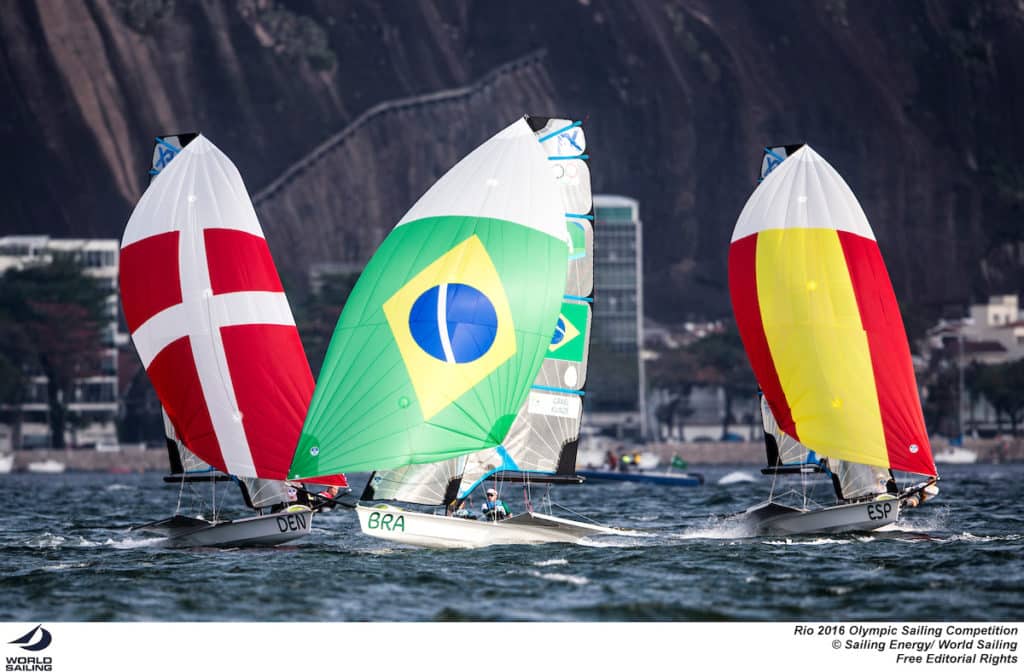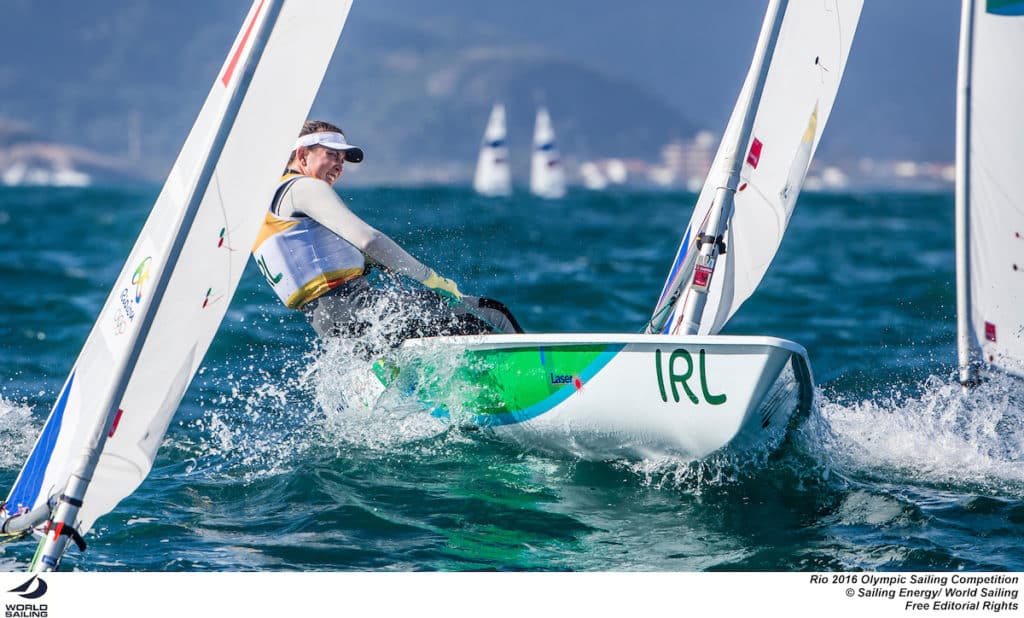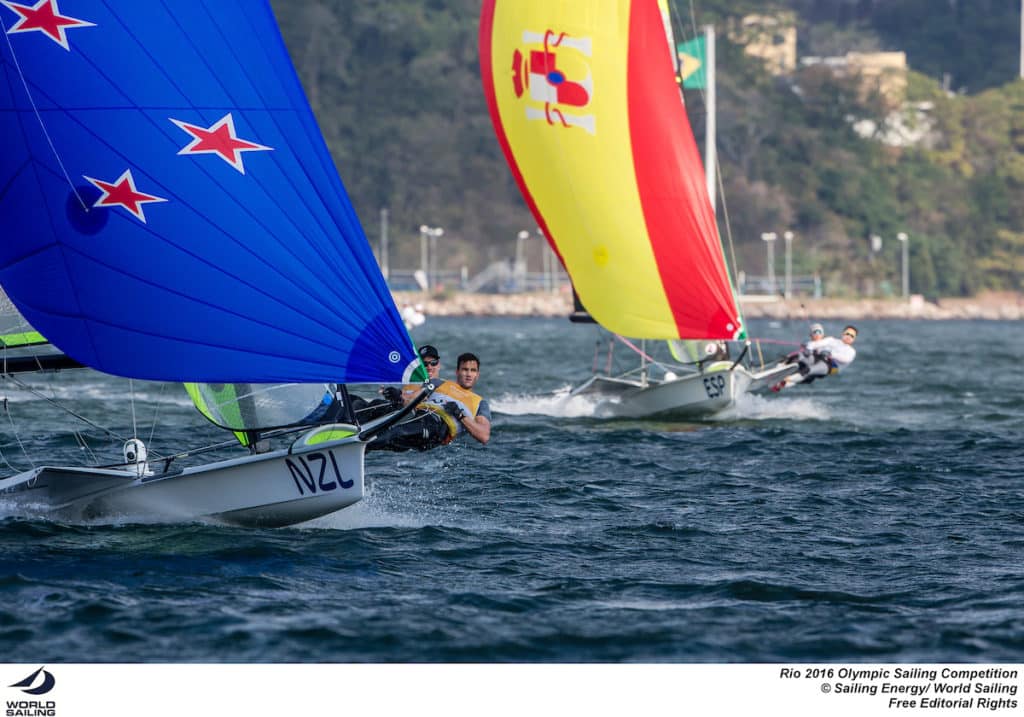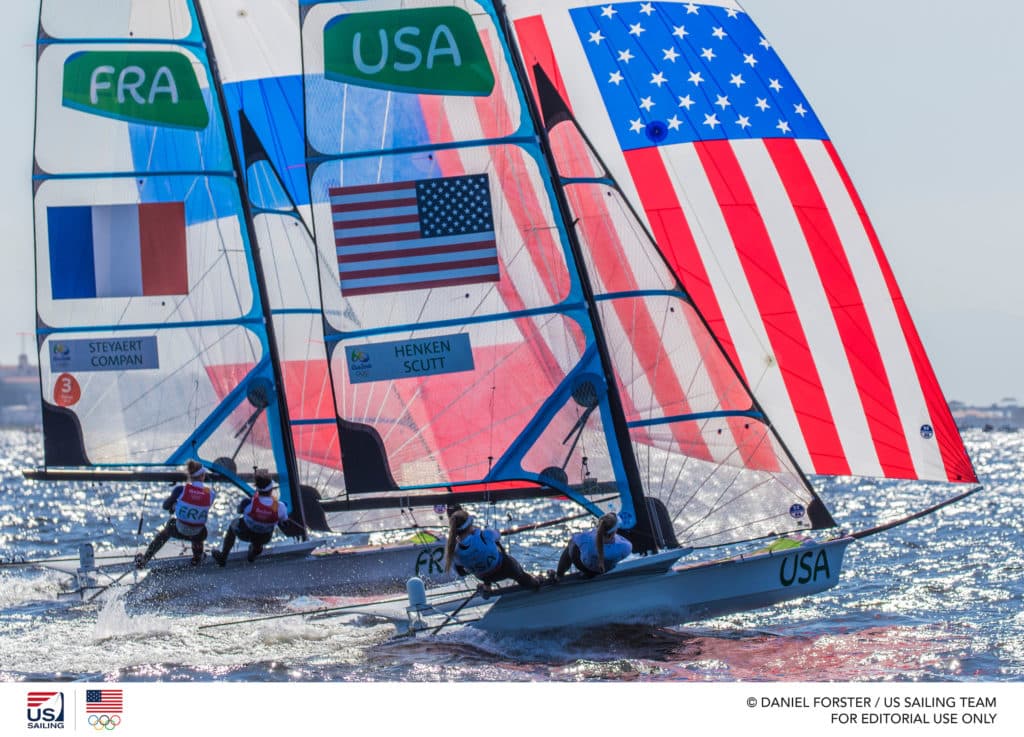
The Rio 2016 Olympic Sailing Competition
Tricky, variable, challenging; these words were used over and over again in press conferences and interviews by the sailors who competed on Guanabara Bay. With seven racecourse areas placed around the bay, World Sailing and the IOC put together one of the most challenging regatta venues in recent Olympic memory. The Pao de Acucar course, where all medal races were contested, was one of the trickiest, situated in the shadow of Sugarloaf Mountain, causing the wind to move in unpredictable patterns at times as it swirled off the mountains and buildings nearby. The weather in Rio lived up to its reputation, delivering a handful of light and puffy days interspersed between days with 20+ knots of breeze and 4-6 meter swell. Sailors who excelled in Rio had to be comfortable taking on any weather challenge, in addition to taking on the rest of their fleets for a chance at an Olympic medal.
The difficultly of the venue was reflected in the overall score lines of even the best sailors, as was the high level of competition in the fleets. A number of top finishers, including some medalists, had UFD or DSQs on their scorecards. Most were ultimately throw outs in the end, but these penalties prevented them from tossing any higher race finishes off of their docket.
China’s Lily Xu was among those favored initially who fell to penalties, when after three DSQs involving a variety of right-of-way infringements she was in 18th overall in the fleet and shut out of the medal race. 470 silver medalists Jo Aleh and Polly Powrie from New Zealand won their podium position in the 470 while still carrying one UFD and dropping a DSQ.

The Rio 2016 Olympic Sailing Competition
The women’s skiff was the most closely packed fleet in terms of points at the top, with the four possible medalists going into the medal race on Thursday within a single point of each other. Three were tied with 46 while the fourth had 47 points. The women’s 470 and RS:X had the most open medal races, with seven boats in each fleet able to score few enough points to medal depending upon their finish in the final race.
The Nacra 17 class had the closest podium, with gold medalists ** Santiago Lange and Cecilia Carranza Saroli** winning gold by one point over Australia’s Jason Waterhouse and Lisa Darmanin. The Aussies were in turn tied for points with bronze medalists Thomas Zajac and Tanja Frank, from Austria. Waterhouse and Darmain won silver over the Austrians due to their finish in the medal race. In the Olympics, if after the medal race two teams are tied for points, the tiebreaker is not the number of higher finishes as is in traditional regattas, but instead it’s the medal race finish order.
One of the goals of the double-points medal race format is to avoid situations where gold medals, or medalists, are decided ahead of the final contest. However, in Rio the points margins were so large in four classes that the medal race points weren’t enough to dethrone the gold medalists: New Zealand’s Peter Burling and Blair Tuke (49er), Great Britain’s Hannah Mills and Saskia Clark (470 Women), Great Britain’s Giles Scott (Finn) and The Netherland’s Dorian Van Rjsselberghe (RS:X Men). A number of other sailors were also guaranteed medals going into the races, and the final contest was to determine the color. While the medal race certainly made for a nail-biting finale in the Nacra, 49erFX and Laser Radial, there are still some sailors who were so clearly dominant in their class that the high-stakes culmination of the Olympic regatta simply didn’t matter.

The Rio 2016 Olympic Sailing Competition
New Zealand and Australia lead the total medal count with four medals each, Australia with one gold (Laser) and three silver (470 men, Nacra 17 and 49er), and New Zealand with one gold (49er), two silver (49er FX and 470 women) and one bronze (Laser).
Great Britain and the Netherlands tied for the most gold medals, with two each. Great Britain won gold in the Finn and women’s 470, and the Netherlands in the Laser Radial and men’s RS:X. Britain’s performance in Rio was not as dominant as it has been in past years, and while Team GBR’s sailing was certainly as high-level, it seems other countries, besides New Zealand and Australia who have always been right there behind Britain, are catching up in performance. Take Croatia, for example, who had the most impressive performance in Rio, with Tonci Stipanovic winning his country its first-ever medal in Olympic sailing when he won silver in the Laser class. Two days later, the 470 men, Sime Fantela and Igor Marinec, won the country’s first-ever Olympic sailing gold.
Team USA broke their medal drought that descended in London, with a bronze medal in the Finn class, won by Caleb Paine. The United States had fifteen sailors in the Olympics, in all classes, and twelve of those (including Paine) were competing in their first Games. For their first quad, 470 women Annie Haeger and Briana Provancha sailed an impressive series, culminating in a heartbreaking finale where two mistakes cost them podium position.

2016 Olympic Games Rio de Janeiro
In the 49erFX, Paris Henken and Helena Scutt finished 10th overall in the fleet, an impressive score for two of the youngest sailors in the class. Their goal going into the regatta was to make the medal race at all, a goal they crushed. Scutt was seriously injured in a collision with another skiff during the quad, and recovered stronger than ever. There’s little doubt that these two will be back for more. But first, Henken is going back to College of Charleston to finish her undergraduate degree.
In the Nacra 17, Bora Gulari and Louisa Chafee had an impressive comeback in the final days of the regatta, gaining eight positions in the fleet in three days, but it wasn’t enough to podium. It was enough, however, to prove to the class that the American mixed multihull team were there to play. Gulari and Chafee were plagued with equipment failures on the second race day, forcing them to DNF twice, severely hurting their scores. It’s impossible to say for certain, but without those breakages these two would have likely been medal prospects. American Olympic veteran Stu McNay and coaching veteran and crew David Hughes finished fourth overall in the 470 Men’s fleet. With no chance to win a medal due to points, McNay and Hughes sailed a grand finale anyway, coming second in the medal race.
US Sailing Team wrapped up their quad with a recap video:
For full results from the entire regatta, visit sailing.org.









